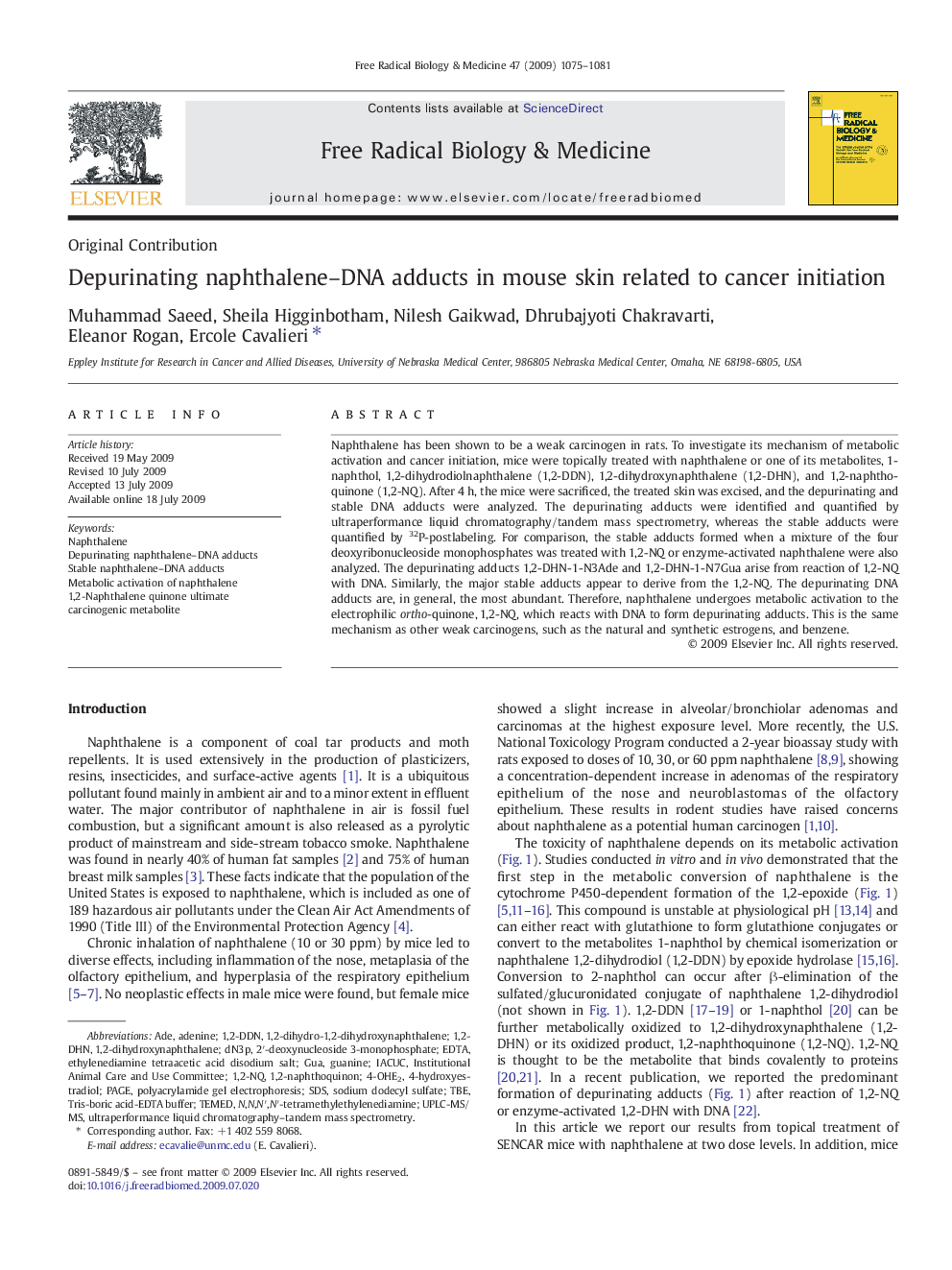| کد مقاله | کد نشریه | سال انتشار | مقاله انگلیسی | نسخه تمام متن |
|---|---|---|---|---|
| 1909798 | 1046740 | 2009 | 7 صفحه PDF | دانلود رایگان |
عنوان انگلیسی مقاله ISI
Depurinating naphthalene-DNA adducts in mouse skin related to cancer initiation
دانلود مقاله + سفارش ترجمه
دانلود مقاله ISI انگلیسی
رایگان برای ایرانیان
کلمات کلیدی
4-OHE2SDSTEMEDGUATBEADEIACUCPAGE4-Hydroxyestradiol - 4-هیدروکسی استرادیولN,N,N′,N′-tetramethylethylenediamine - N، N، N '، N'-tetramethylethylenediamineUPLC-MS/MS - UPLC-MS / MSAdenine - آدنینEDTA - اتیلن دی آمین تترا استیک اسید ethylenediamine tetraacetic acid disodium salt - اتیلنیدین تتراستیک اسید نیکل دی سدیمpolyacrylamide gel electrophoresis - الکتروفورز ژل پلی آکریل آمیدInstitutional Animal Care and Use Committee - سازمان مراقبت و مراقبت از حیواناتsodium dodecyl sulfate - سدیم دودسیل سولفاتNaphthalene - نفتالینGuanine - گوانین
موضوعات مرتبط
علوم زیستی و بیوفناوری
بیوشیمی، ژنتیک و زیست شناسی مولکولی
سالمندی
پیش نمایش صفحه اول مقاله

چکیده انگلیسی
Naphthalene has been shown to be a weak carcinogen in rats. To investigate its mechanism of metabolic activation and cancer initiation, mice were topically treated with naphthalene or one of its metabolites, 1-naphthol, 1,2-dihydrodiolnaphthalene (1,2-DDN), 1,2-dihydroxynaphthalene (1,2-DHN), and 1,2-naphthoquinone (1,2-NQ). After 4Â h, the mice were sacrificed, the treated skin was excised, and the depurinating and stable DNA adducts were analyzed. The depurinating adducts were identified and quantified by ultraperformance liquid chromatography/tandem mass spectrometry, whereas the stable adducts were quantified by 32P-postlabeling. For comparison, the stable adducts formed when a mixture of the four deoxyribonucleoside monophosphates was treated with 1,2-NQ or enzyme-activated naphthalene were also analyzed. The depurinating adducts 1,2-DHN-1-N3Ade and 1,2-DHN-1-N7Gua arise from reaction of 1,2-NQ with DNA. Similarly, the major stable adducts appear to derive from the 1,2-NQ. The depurinating DNA adducts are, in general, the most abundant. Therefore, naphthalene undergoes metabolic activation to the electrophilic ortho-quinone, 1,2-NQ, which reacts with DNA to form depurinating adducts. This is the same mechanism as other weak carcinogens, such as the natural and synthetic estrogens, and benzene.
ناشر
Database: Elsevier - ScienceDirect (ساینس دایرکت)
Journal: Free Radical Biology and Medicine - Volume 47, Issue 7, 1 October 2009, Pages 1075-1081
Journal: Free Radical Biology and Medicine - Volume 47, Issue 7, 1 October 2009, Pages 1075-1081
نویسندگان
Muhammad Saeed, Sheila Higginbotham, Nilesh Gaikwad, Dhrubajyoti Chakravarti, Eleanor Rogan, Ercole Cavalieri,